1880 : The Seats of the Nobility
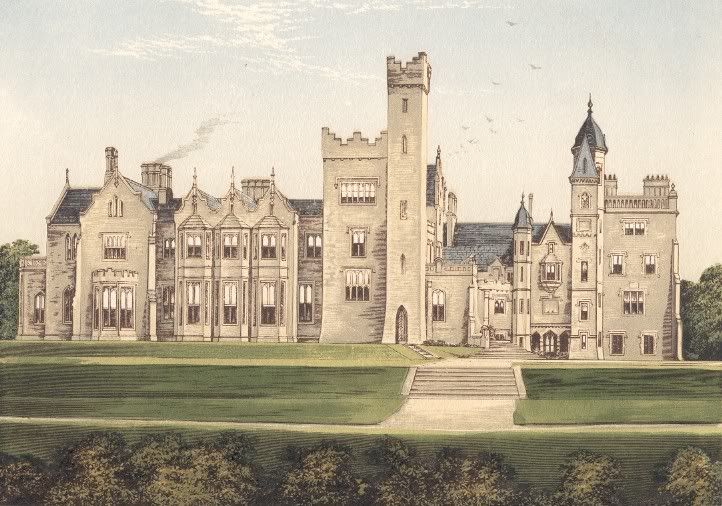
19th century chromolithograph of Rossmore Park, County Monaghan, Ireland the ancestral home of Lord Rossmore. Published in Views of the Seats of the Nobility, by F.O. Morris, London 1880.
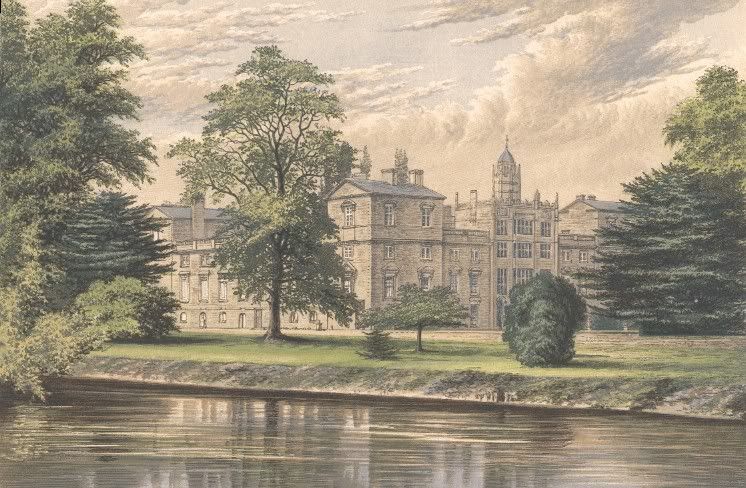
19th century chromolithograph of Wilton House, Wiltshire, England the ancestral home of the Earl of Pembroke. Published in Views of the Seats of the Nobility, by F.O. Morris, London 1880.
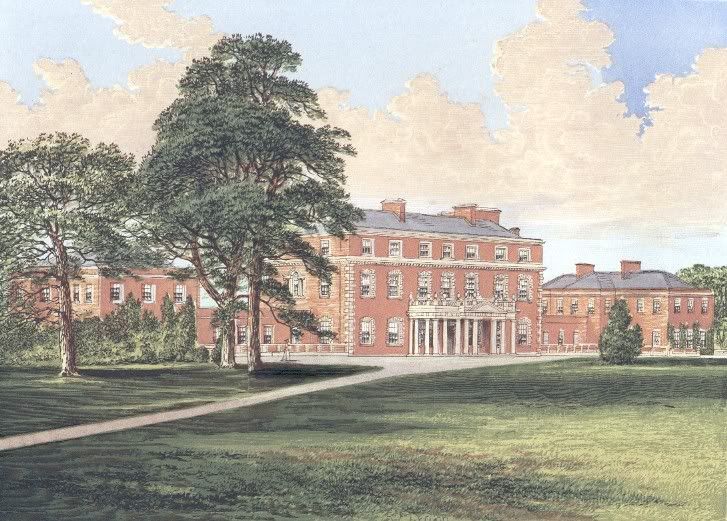
19th century chromolithograph of Trafalgar House, near Salisbury, Wiltshire, England the ancestral home of Earl Nelson. Published in Views of the Seats of the Nobility, by F.O. Morris, London 1880.
Trafalgar House, also known as Trafalgar Park, is a country house in Wiltshire, England associated with the family of Admiral Lord Nelson, victor of the Battle of Trafalgar.
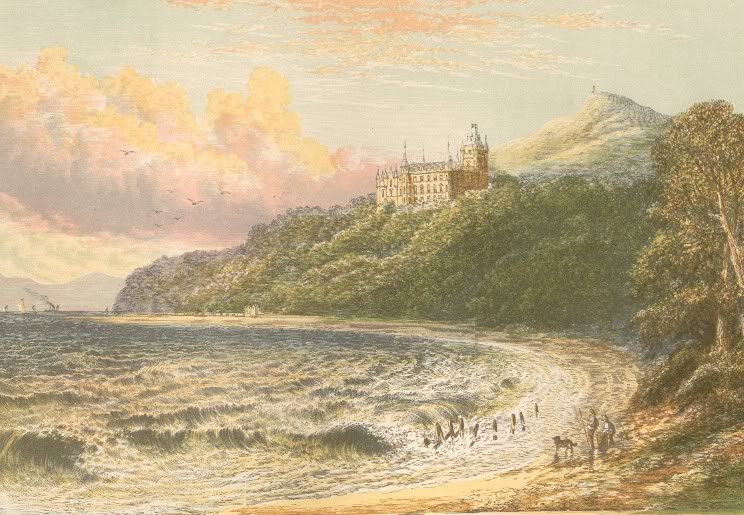
19th century chromolithograph of Dunrobin Castle, Sutherlandshire, Scotland the ancestral home of the Duke of Sutherland (Clan Sutherland). Published in Views of the Seats of the Nobility, by F.O. Morris, London 1880.
Dunrobin Castle, Sutherlandshire, Scotland
Dunrobin Castle is the seat of Clan Sutherland. The oldest part dates from the late 13th century and was first mentioned as a stronghold of the family in 1401. The name "Dun Robin", Gaelic meaning Robin's hill or fort, may have come from Robert, the 6th Earl of Sutherland who died in 1427. The 13th century "keep" is no longer visible from the outside of the castle but can be seen from the corridor windows. The "keep", with walls six feet thick and a vaulted ceiling, stood isolated for some 200 years until a new staircase and a long high house were added. It was encased by a series of additions from the 16th century onwards. In 1785 a large extension was constructed.
In the 1845, Dunrobin was extensively remodeled by the architect Sir Charles Barry, who had designed the Houses of Parliament. This renovation encased the early castle and gave the castle most of its current appearance with the conical spires. The massive baronial residence was inspired by Queen Victoria's new residence at Balmoral. Barry also laid out the gardens in the 1850s.
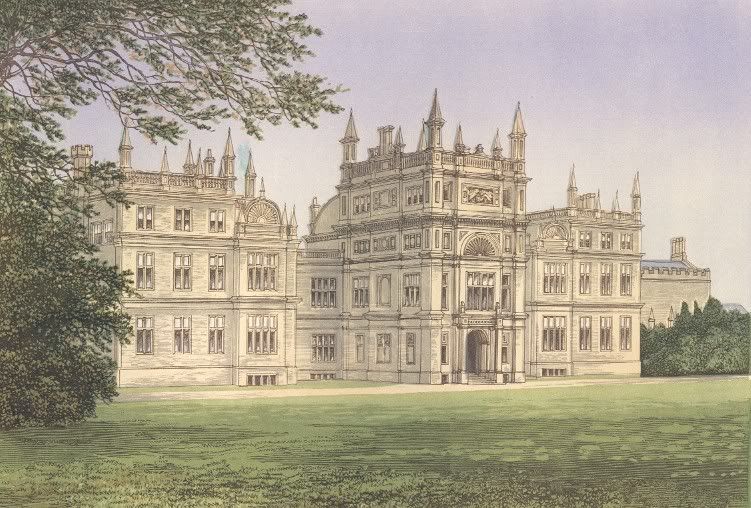
19th century chromolithograph of Corsham Court, Chippenham, Wiltshire the ancestral home of the Methuen family which was built in 1582 (designed by Bellamy, Nash and Adam). Published in Views of the Seats of the Nobility, by F.O. Morris, London 1880.
Corsham Court near Chippenham, Wiltshire
Elizabethan manor purchased 1745 by Paul Methuen to house and display collection of Old master paintings (Flemish and Italian), statuary, plate and furniture collected by his distinguished cousin Sir Paul Methuen. House improved and extended for better display of art treasures especially in picture gallery with console tables by Adams and Pier glasses. Marble fireplace with busts by Scheemaker forms impressive centre piece. House extended when art collection supplemented and North Front remodelled by Thomas Bellamy. Following structural failure of work by Nash. Period of construction:1582. Extended late 18th and mid 19th century.
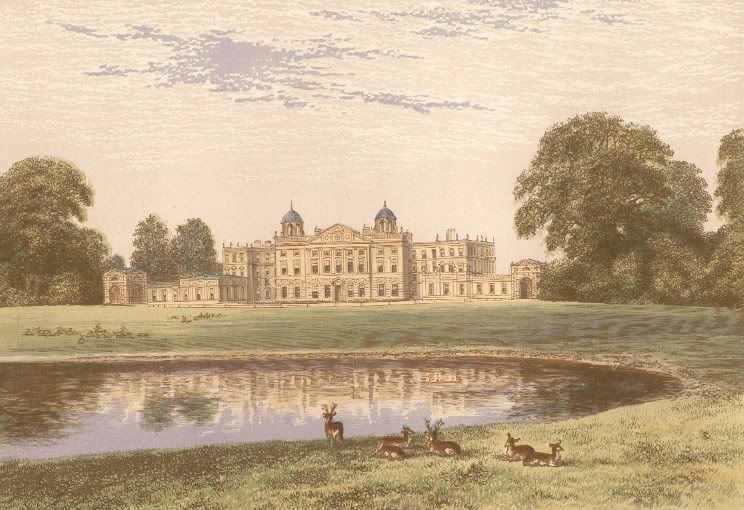
19th century chromolithograph of Badminton House, Gloucestershire the ancestral home of the Duke of Beaufort. Published in Views of the Seats of the Nobility, by F.O. Morris, London 1880.
Badminton House, Gloucestershire
Badminton House is a large country house in Gloucestershire, England, and has been the principal seat of the Dukes of Beaufort since the late 17th century. The architect William Kent renovated and extended the house in the Palladian style in the early 18th century, but many earlier elements remain. The sport of Badminton was invented at the house. Queen Mary stayed at Badminton House for much of the Second World War. In the 21st century Badminton House is best known for the annual Badminton Horse Trials. Badminton House is also very strongly associated with fox hunting. Successive Dukes of Beaufort have been masters of the Badminton Hunt, which is probably one of the two most famous hunts in the United Kingdom.
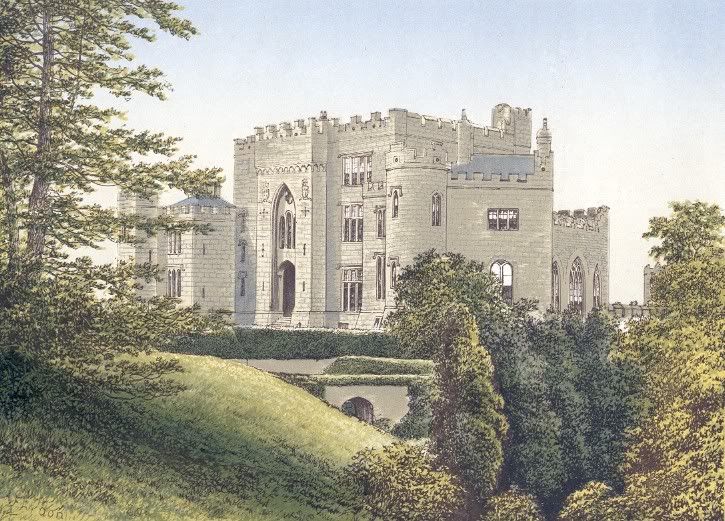
19th century chromolithograph of Birr Castle, King's County, Ireland the ancestral home of the Earl of Rosse. Published in Views of the Seats of the Nobility, by F.O. Morris, London 1880.
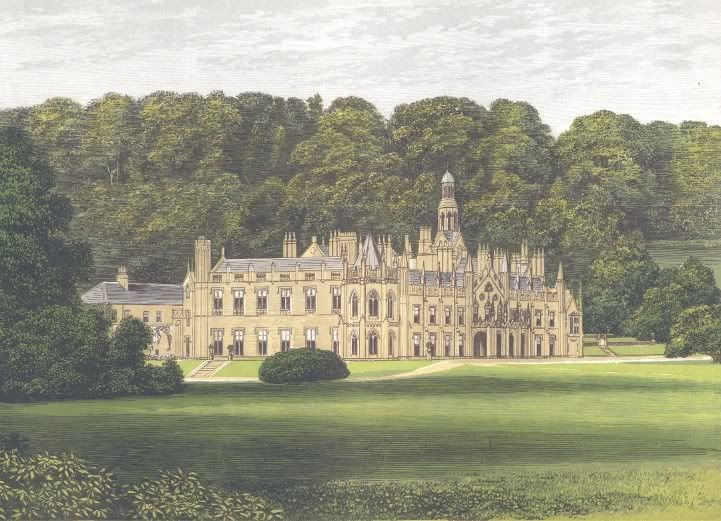
19th century chromolithograph of Shelton Abbey. near Arkelow, County Wicklow, Ireland the ancestral home of the Earl of Wicklow. Published in Views of the Seats of the Nobility, by F.O. Morris, London 1880.
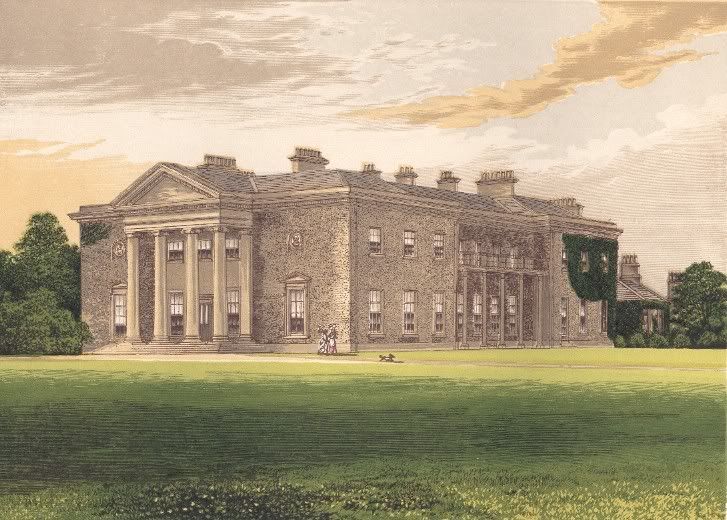
19th century chromolithograph of Bishops Court, near Straffan, County Kildare, Ireland the ancestral home of the Earl of Clonmell. Published in Views of the Seats of the Nobility, by F.O. Morris, London 1880.
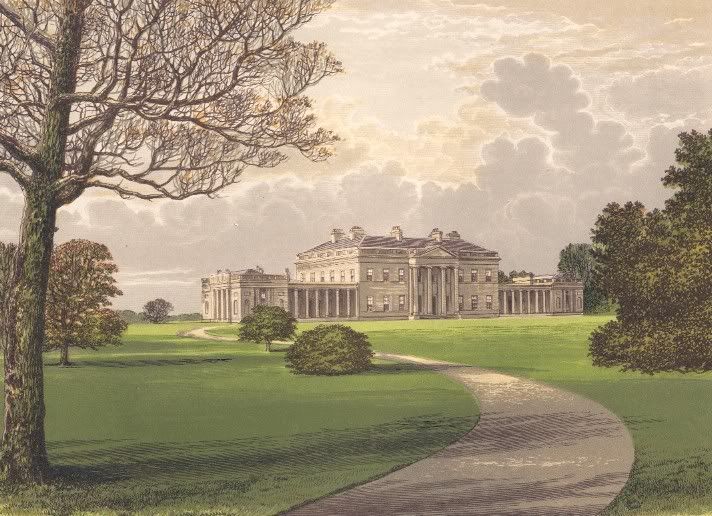
19th century chromolithograph of Castle Coole, County Fermanagh, Ireland the ancestral home of the Earl of Belmore. Published in Views of the Seats of the Nobility, by F.O. Morris, London 1880.
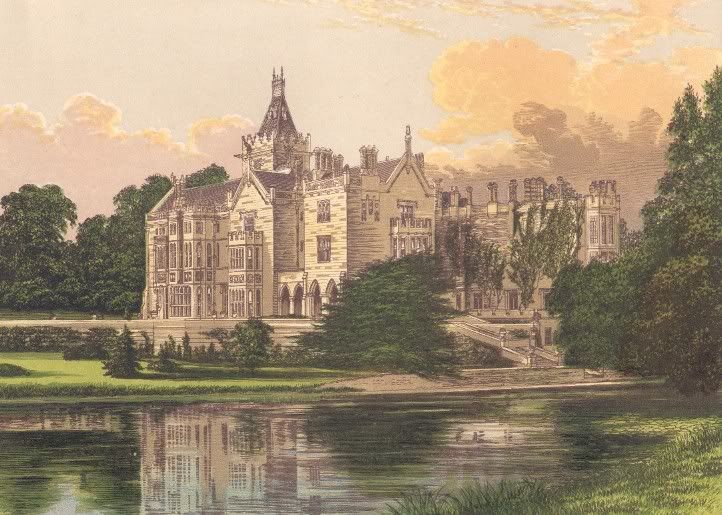
19th century chromolithograph of Adare Manor, near Adare, County Limerick, Ireland the ancestral home of the Earl of Dunraven. Published in Views of the Seats of the Nobility, by F.O. Morris, London 1880.
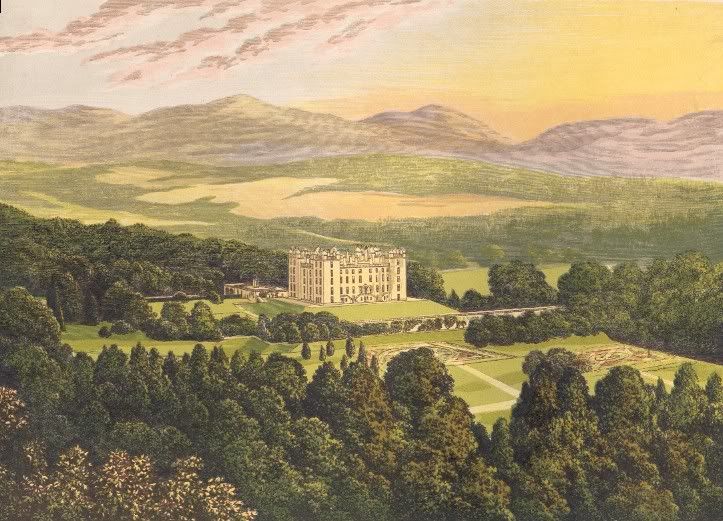
19th century chromolithograph of Drumlanrig Castle, Dumfriesshire, Scotland the ancestral home of the Duke of Buccleuch. Published in Views of the Seats of the Nobility, by F.O. Morris, London 1880.
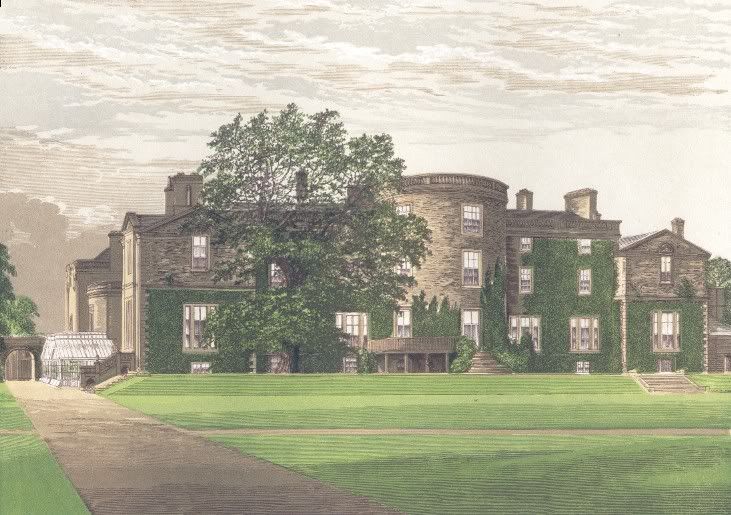
19th century chromolithograph of Galloway House, near Wigtown, Wigtownshire, Scotland the ancestral home of the Earl of Galloway. Published in Views of the Seats of the Nobility, by F.O. Morris, London 1880.
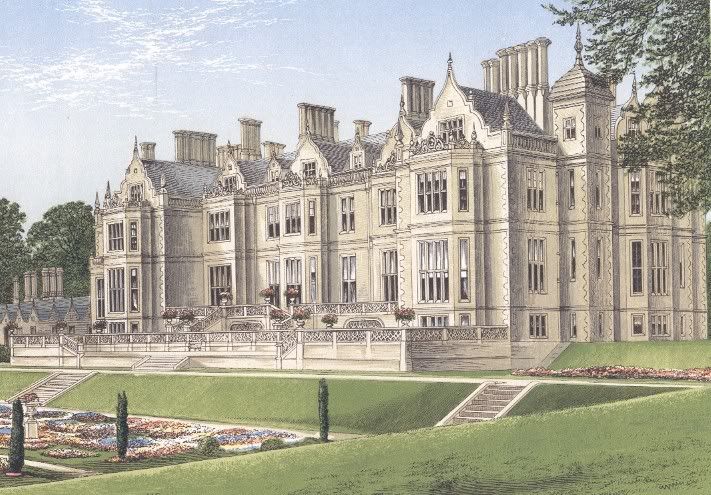
19th century chromolithograph of Dartrey, County Monaghan, Ireland the ancestral home of the Earl of Dartrey. Published in Views of the Seats of the Nobility, by F.O. Morris, London 1880.
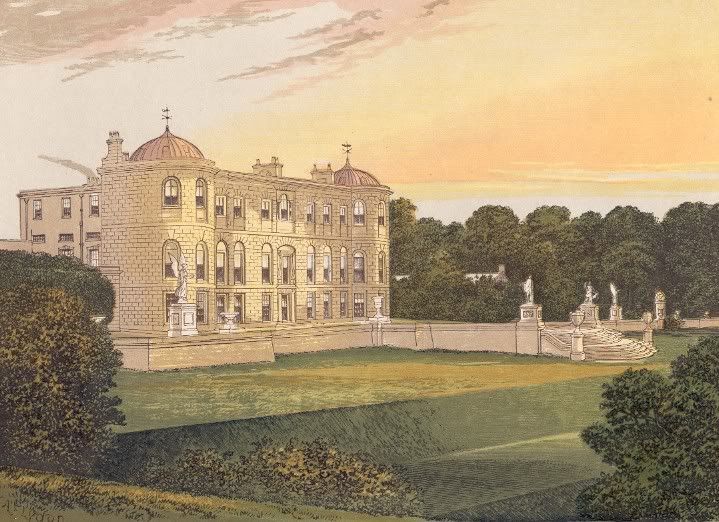
19th century chromolithograph of Powerscourt, near Enniskerry, County Wicklow, Ireland the ancestral home of Viscount Powerscourt. Published in Views of the Seats of the Nobility, by F.O. Morris, London 1880.
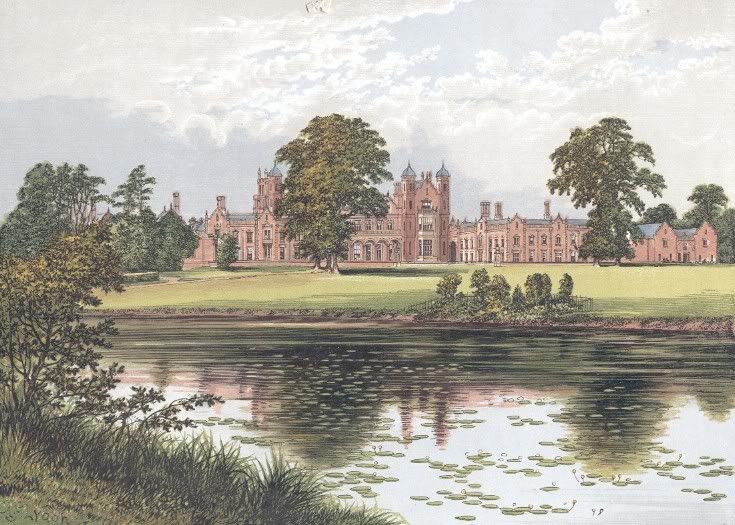
19th century chromolithograph of Capesthorne, near Chelford, Cheshire, England the ancestral home of the Davenport Family. Published in Views of the Seats of the Nobility, by F.O. Morris, London 1880.
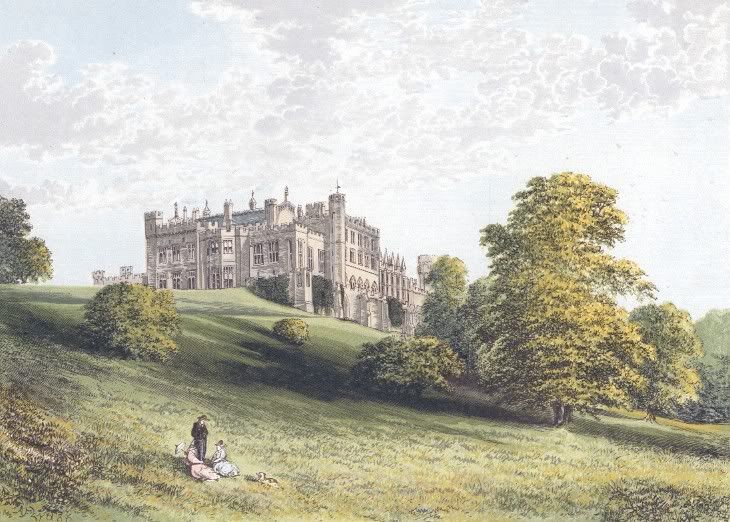
19th century chromolithograph of Lambton Castle, Durham, England the ancestral home of the Earl of Durham. Published in Views of the Seats of the Nobility, by F.O. Morris, London 1880.
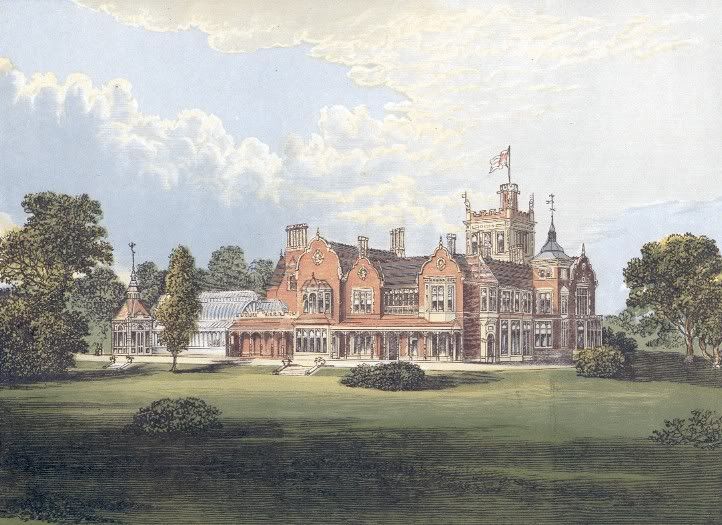
19th century chromolithograph of Caen Wood Towers, Highgate, Middlesex, England the ancestral home of the Brooke Family. Published in Views of the Seats of the Nobility, by F.O. Morris, London 1880.
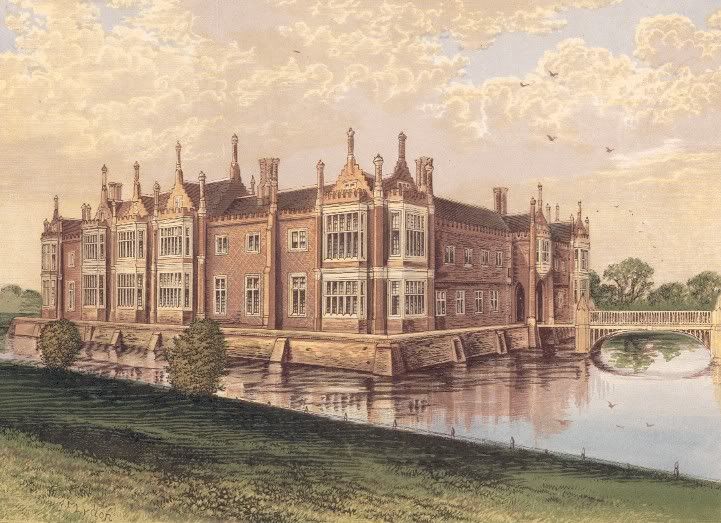
19th century chromolithograph of Helmingham Hall, near Debenham, Suffolk, England the ancestral home of the Tollemache Family. Published in Views of the Seats of the Nobility, by F.O. Morris, London 1880.
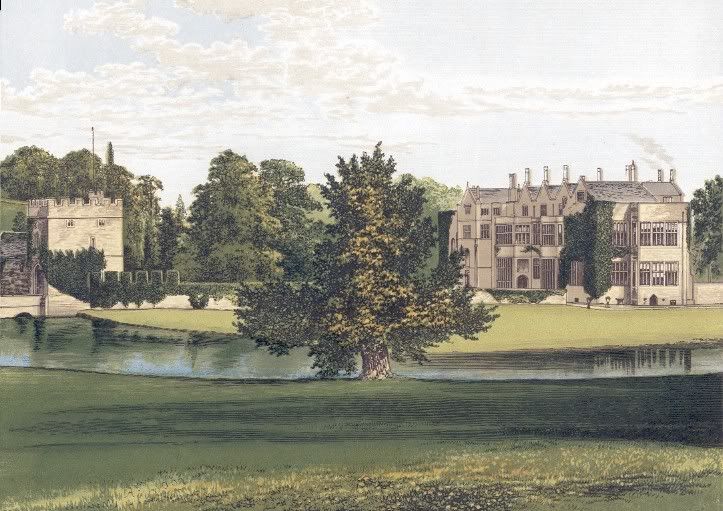
19th century chromolithograph of Broughton Castle, near Banbury, Oxfordshire, England the ancestral home of Lord Saye and Sele. Published in Views of the Seats of the Nobility, by F.O. Morris, London 1880.
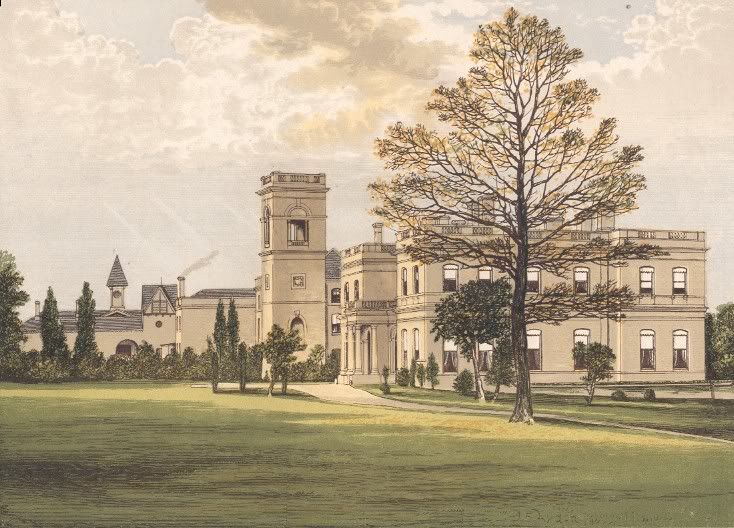
19th century chromolithograph of Stowlangtoft Hall, near Bury St. Edmonds, Suffolk, England the ancestral home of the Wilson Family. Published in Views of the Seats of the Nobility, by F.O. Morris, London 1880.